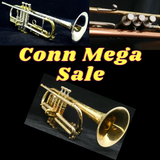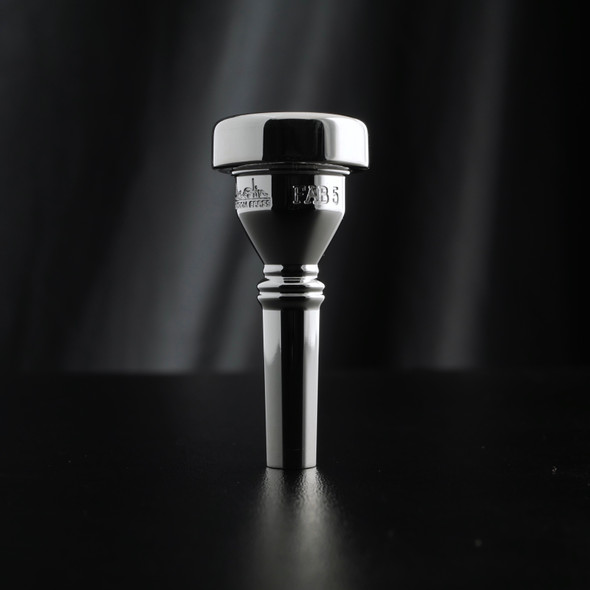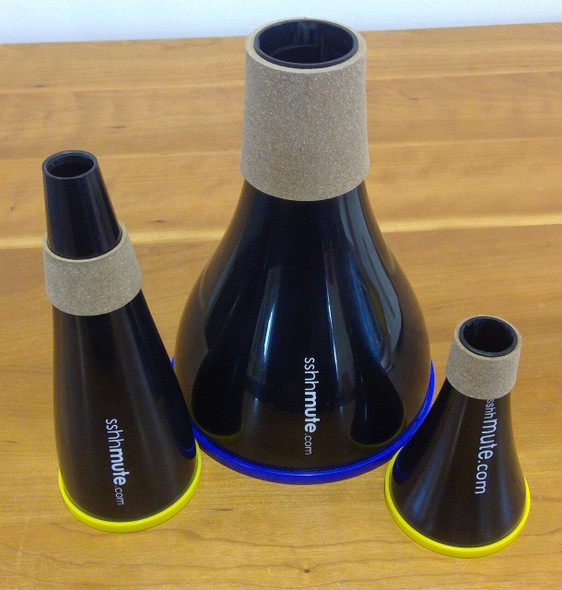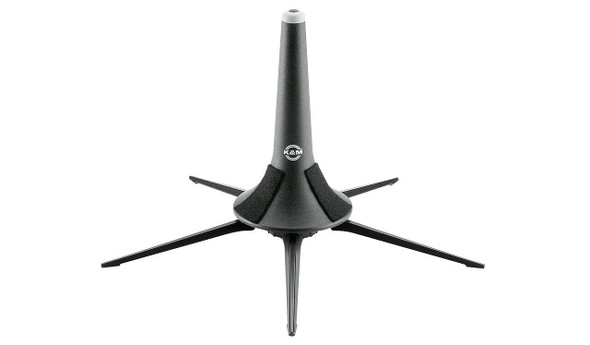Description
Conn produced some incredible cornet designs over the years and we always try to have a bunch of options in stock. These are all pre-owned instruments with varying amounts of wear, and are priced accordingly. All are individually listed on our web store as well, and of course you can send us an email at info@austincustombrass.com with questions about any particular instrument we have in stock! No cases or mouthpiece are included. Check the descriptions below to learn a little bit about the models (but not the specific instruments) we have available.
Information below comes from the fabulous Conn Loyalist website [link to external site], a must-visit resource for anyone interested in the history of American band instrument design. There are so many more amazing trumpet and cornet designs to check out!
1913 Conn New Invention Circus Bore Cornet
From Conn Loyalist
When Conn was still owned by Col. Conn himself models cornet that resembled each either very closely: the Perfected Wonder, and the New Invention Circus Bore. For a long time I thought these were the same model. However, the cornet expert and collector H.M. Lewis has explained to me how to tell the difference.
The Perfected Wonder model was built between approximately 1906 en 1910. The "Wonder" models, which include the Wonder, New York Wonder, Wonderphone, Perfected Wonderphone and the Perfected Wonder have in them patent number 343888, which is a patent for valve design. The easiest way to see this is to look at the short tube that connects the 3rd valve to the 2nd valve: in these models, following the patent, this tube is angled up from the 3rd valve to the 2nd valve. I am told by H.M. Lewis that all the Perfected Wonders he has played had "fairly severe intonation problems."
In 1911 the Conn factory was destroyed by fire. It is reasonable to assume that as a result a redesign of certain models took place; after all, they had to restart from scratch anyway. This is where the new Invention Circus Bore came in: visually extremely similar to the Perfected Wonder, except that the tube between the 3rd and 2nd valve is horizontal. In spite of its name, the "Circus Bore" model was available in small, medium and large bore. That should correspond to bore sizes of 1½ (0,458"), 2 (0.468") and 2½ (0.484"), respectively. It is my impression that the large bore version was most common. The instrument pictured is a small bore version. The Circus Bore model was made in both high and low pitch and was produced from 1911 to about 1920.
What Conn said in 1913:
The claim made for the New [Invention] Circus Bore Cornet is that it has a better and more correct scale throughout its entire compass, that it plays easier and has a bigger nad more powerful voice-like quality of tone. That it is better balanced, handles easier and that its tone responds more quickly and more readily. The bell of this Cornet hang downward to prevent the free use of the performer's embouchure, and the performer can do more on the Circus Bore Cornet and last longer when doing it than with any other Cornet.
Low Pitch Cornet weighs 2 lbs. 6 oz., length 16¼ inches, bell diameter 5 in.
High Pitch Cornet weighs 2 lbs. 5 oz., length 15¾ inches, bell diameter 4¾ in.
Conn 10A Long Model Cornet
From Conn Loyalist
Notice the coprion bell and the nickel trim. The "Early" models built between 1955 and 1957 have a fixed 3rd slide finger ring, bottom spring valves and don't have a coprion leadpipe. This is the original "Victor" design which in 1961 was re-used without the Coprion or nickel trim in the 25B, 35B and 2A (C, D and Eb Victors, respectively. See "Comparative quality of Conn instruments, part 2" for more information).
Mouthpiece wise, the 6A and 10A Victor models and the 28A Connstellation were built right in the years when Conn appears to have transitioned from short shank to long shank. I know that prior to 1955 Conn cornets were short shank only. From 1958 on they were long shank only. The intervening years, 1955-1957, are a bit uncertain. The 6A and 10A will accept both long and short shank cornet mouthpieces. I have played my 1956 10A with both types of mouthpieces and find that the short shank mouthpiece has less resistance and seems to respond better. However, I am told that the 1956 and 1957 6A and 10A Victor models originally came with long shank mouthpieces. So take your pick. If you own a 1955-1957 28A Connstellation, 10A Victor or 6A Victor, you might want to try it with a short shank cornet mouthpiece if you have one available, to compare and make up your own mind.
How to tell a 10A Victor long cornet and a 10B Victor trumpet apart? The differences are quite subtle, but you should be able to tell if you know what you are looking for. All models for which there is both a long cornet and a trumpet (6A/6B, 10A/10B, 28A/38B) have a letter "A" or "B" stamped on the mouthpiece receiver. An "A" indicates a cornet leadpipe, a "B" indicates a trumpet leadpipe. The second way is to look at where the leadpipe widens out to accomodate the main tuning slide. On a trumpet this happens directly after the leadpipe finger hook, on a long cornet about an inch further down the leadpipe from the finger hook.
What Conn said in 1956:
A brand new cornet, with the lines of a trumpet and acoustical qualities comparable to the 28A. Beautiful cornet tone, accurate scale throughout. Features amazing seamless Coprion bell; Clickless Crysteel valves with famous bottom spring design; acoustically correct mouthpipe; modern valve tips and top and bottom caps. Nickel silver finger hook, third valve ring and water keys. Length 21 3/8", weight 2 lbs. 10 oz., bell diameter 5 1/8". Outfit includes sturdy, handsome Connstellation case, mouthpiece and music lyre. Highly polished brass, beautiful nickel trim, with Coprion bell, clear lacquer overall.
Conn 26A Director Cornet
From Conn Loyalist
Notice the art-deco engraving on the bell. The unusual mouthpiece is original and correct. Before WW2, "Director" instruments were considered professional models. Notice that this instrument doesn't have a finger hook on the leadpipe. The absence of the finger hook was common in the 1920's and early 1930's. Also notice that the configuration of the tubing on this 26A Director is essentially the same as the 14A, 15A, 17A and 18A Directors of the 1950's and 1960's. Also note that the configuration of the 26A is of similar design as the 20A Fluegelhorn. It has been suggested that the 26A was a development of that early model 20A fluegelhorn. I have also been told that the early 26A's played substantially different from the later model 26A's with the early ones being more similar to that early 20A. The 26A Director was produced between at least 1930 and 1940.
The C.G. Conn LTD. company applied for a patent for the design of this cornet on December 18, 1931, patent number 1,905,141. The patent application reads, in part: "It is an object of the invention to improve the construction of this type of instrument by arranging certain parts thereof in relation to others in such manner as to facilitate the holding of the instrument while it is being played, and also to facilitate the operation of the various valves while it is being held." The patent also has a knob and screw mechanism similar to the opera glass tuning slide of the 80A, but in this case attached to the slide coming out of the third valve running into the bell. Contrary to what I had said here previously, it appears that the 26A does indeed have that mechanism.
What Conn said in 1937:
The 26A was developed to meet the demand for a more typical cornet - short in length, compact in design and having a more characteristic "cornet" tone. The bore is large with a large throat bell, giving it "genuine" cornet tone - round, full, sonorous and mellow. Special attention has been given to the comfort of holding. This feature, always a problem on short model cornets, has been taken care of by allowing a good hand grip on the valves below the mouthpipe and bell. Patented tuning wheel similar to the one made famous on the Victor. Built in Bb and A, Clickless Crysteel valves.
Conn 34A Concert Special Cornet
From Conn Loyalist
This is the third one of these I have ever seen. At first I thought these were 12A Coprion's with a brass bell. Essentially a 112A (see separate listing). But I have received proof that this is in fact called a 34A: a picture of the underside of the mouthpiece receiver with "34A" clearly stamped on it. As far as I can tell at this point these were only produced for a short period in 1953 and 1954. The 34A doesn't appear in either the 1950 or the 1955 catalogs, but it is in the 1954 catalog. Occasionally you see what appears to be a 12A with a red brass bell, as opposed to a Coprion bell. The models of those I have seen are engraved "12A" on the bell, so are classified as "12A" and not "34A". At first circumstantial evidence suggested the 34A was called the "Symphony Grand", but the 1954 catalog lists it as the "Concert Special". It has a #1½ (0.458") bore.
I have learned that the third slide, without the finger ring to adjust the pitch of a low D and C#, is slightly longer than it is on modern instruments. On modern instruments the low Eb is in tune, but the low D and C# are quite sharp. On these older cornets with the longer third slide and no finger ring the Eb is a bit flat and the D and C# are slightly sharp, but not as sharp as they are on later instruments. It was thought that the slightly flat Eb and slightly sharp D and C# were within the abilities of the player to lip into tune.
What Conn said in 1954:
One of the finest conventional style cornets available... preferred by many players for its "band sound" and perfect balance. Clickless Crysteel valves. Brass, nickel trim finish.
Conn 38A Victor Special
From Conn Loyalist
This is the 38A Victor Special. The "Special" is in the nickel trim. It has bottom spring valves and has a #1½ (0.459") bore, which at the time was described as a "small" bore. The main tuning slide has an expanding bore: the top tube of the main tuning slide is 0.438" and the bottom tube is 0.458". The bell size is 4 5/8". It was produced between 1935 and 1941.
Patent for this instrument was applied for on October 4, 1937, U.S. Patent number 2,146,967. Part of the patent application reads as follows: "An object of the invention is to shorten the instrument, without sacrificing any of the tone quality, by arranging the tuning slide in a complete loop, the ends of which are arranged beside each other and facing in opposite directions, instead of the U-shaped section in which the tuning slide is usually arranged, thereby adding to the length of the air column in the instrument the full width of the loop, and consequently permitting shortening the the length of the instrument somewhat for any given total length of the air column. This involves offsetting the parts of the instrument body at the base of the loop, [as explained below,] to bring them along side each other." The patent application then goes on to state the second purpose of the patent: "Another object of the invention is to speed up the adjustment of the tuning slide by utilizing and adjustment member (...) having right-and-left threaded engagement with posts mounted to extend towards across the loop from the tuning slide and from the instrument body." The upshot of all this is that as well as shortening the length of the instrument by the width of the opera glass tuning slide, turning the knob of the tuning slide will extend it twice as fast as on, for example, the 80A.
I have learned that the third slide without the finger ring to adjust the pitch of a low D and C# is slightly longer than it is on modern instruments. On modern instruments the low Eb is in tune, but the low D and C# are quite sharp. On these older cornets with the longer third slide and no finger ring the Eb is a bit flat and the D and C# are slightly sharp, but not as sharp as they are on later instruments. It was thought that the flat Eb and slightly sharp D and C# were within the abilities of the player to lip into tune.
What Conn said in 1937:
The new 38A Victor cornet was developedto meet the insistent demand for a cornet similar to the famous 80A Victor but in smaller bore. Soloists especially demanded a cornet which would make their work easier in the upper register. To make a cornet in small bore with both a good upper register and also a good lower register presented a most difficult task. But Conn engineers, after nearly two years of experimenting, have produced just such a cornet. The angle of taper in the bore of this cornet is greater than in any other Conn cornet. It widens from a small mouthpipe to an unusually large throated bell. This design gives a very flexible scale and a rich, mellow tone. The upper register is true and pure, while the lower notes are solid and full. This is unusual in a small bore cornet, for generally if the upper register is good the lower register is windy, colorless and hard to get. Although free blowing, it has proper resistance which gives the player just the "feel" he wants. Being in small bore, the stroke of the pistons is shortened, giving a short, fast action. Some of the finest cornet soloists in America helped us develop this model and their tests of the final model are enthusiastic in its praise. One of the first to purchase was the famous Ernest Williams, Ernest Williams School of Music. Key of Bb and A. Tuning wheel. Clickless Crysteel valves. Finger hook.
Conn 48A Connqueror Long Model Cornet
From Conn Loyalist
This is the cornet version of the 48B Connqueror Vocabell trumpet. The main difference between the 48A and 48B is the mouthpiece receiver. The 48A takes a cornet mouthpiece; a trumpet mouthpiece won't fit. Also, the mouthpiece receiver on the 48A doesn't come out as far as it does on the 48B; on the 48B is comes out beyond the bell crook, on the 48A it comes right to the bell crook. The 48A doesn't have a third slide finger ring, the 48B does.
The 48A had a #2 (0.467") bore, bottom spring valves and was produced from 1938 to 1951.
What Conn said in 1938:
New, shorter and wider model for better balance. Easier response, distinctively mellow, true cornet tone. Medium bore, Bb and A.
Conn 80A Victor Cornet
From Conn Loyalist
Notice the micro-tuning mechanism or "opera glass" just forward of the first valve. This 80A being a later version doesn't have the mechanism that automatically adjusts all slides when the main tuning slide is pulled out to A. The older type 80A also had top spring valves with adjustable spring strength, this version has bottom spring valves. Another minor difference is the fact that on the older model the second slide is at a right angle to the instrument, while on this newer version it angles back towards the player. I am told the 80A has a duo bore or "expanding bore" main tuning slide: the top half is a #2 (0.468") bore, the bottom half is a #2½ (0.484") bore.
Models of 80A that were produced during 1953 and 1954 have (I assume nickel-) plated slide ends. For all intents and purposes it looks like someone put a silverplated slide on a lacquered instrument. I suppose you could say these were transitional models leading up the 1955 version of the 80A (see separate entry).
On very rare occasion you will find an 80A with a coprion bell. These will have the serial number engraved on the bell, indicating a U.S. Government instrument. I have seen one in silver plate with a confirmed coprion bell under the silver plating, and one in lacquer. The lacquered one had been relacquered, which might indicate it had originally been silver plated as U.S. Government instruments are almost invariably silver plated. These very few coprion bell 80A's all had serial numbers dating to 1952. As it happens, 1952 was a bumper year for U.S. Government instruments.
I have learned that the third slide without the finger ring to adjust the pitch of a low D and C# is slightly longer than it is on modern instruments. On modern instruments the low Eb is in tune, but the low D and C# are quite sharp. On these older cornets with the longer third slide no finger ring the Eb is a bit flat and the D and C# are slightly sharp, but not as sharp as they are on later instruments. It was thought that the flat Eb and slightly sharp D and C# were within the abilities of the player to lip into tune.
A member of the Trumpet Herald Forum with experience on the 80A has this to say about using the 80A with various style mouthpieces: "The 80-A's are very mouthpiece sensitive, in that the tonal characteristics change greatly with the mouthpiece choice. If you use a deep cup, such as a Wick or one of the various vintage cornet cups, it gets a very rich, velvety sound to the tone, but loses projection. Put in a fairly deep bowl cup, and the projection gets better, but tone brightens a bit. Put in a Bach C cup of your choice, and you can hang with the trumpets for brightness. Go to a shallow cup and tight backbore, and you can get a laser beam sound."
What Conn said in 1941:
The 80-A model has made the Victor name famous. It is the favorite of many of the greatest cornet soloists, and a host if the younger artists have found it to be the ideal cornet for them. Year after year, dozens of the finest school champions in America win on the Victor. This model has won its popularity on exceptional merit. It is built in large bore and consequently has a big, mellow, rich tone, but it is so scientifically designed that it reponds with great ease and can be played for long engagements without tiring the player. Its extremely accurate scale has stood the test of exacting critics for years, and its flexibility throughout the complete range has never been excelled by any other cornet. Has Clickless Crysteel valves, Victor tuning wheel. Built in Bb and A.
What Conn said in 1950:
Two generations of fine cornet players have sung the praises of the large bore, Bb-A 80A Victor. Improved year after year, today it's better than ever.
What Conn said in 1956:
Year after year this is the favorite of many of the world's greatest cornet soloists ... the standard of comparison for all-round cornet performance. Bore is calibrated for big, mellow tone. Features exclusive Conn Clickless Crysteel bottom spring valves, "opera glass" tuning device. Length 18", weight 2 lbs. 15 oz., bell diameter 4 5/8". Outfit includes attractive durable Victor case with correct mouthpiece and music lyre.
Highly polished brass, nickel trim, clear lacquer overall. Also available: satin finish silver plated, brilliant gold inside bell.
What Conn said in 1959:
Year after year this model is demanded by some of the greatest soloists. Large bore gives big tone and Clickless Crysteel valves provide fast, smooth, quiet action. Features on the 80A: opera glass tuning, large bore short model design, clickless single pin type valves, cornet "band sound", Lustre-Conn finish. Length 18", bell size 4 1/2".
Sold with no case or mouthpiece.
If you have additional questions send us an email.
Prior to ordering please check our Shipping and Returns policy.
Also note weight indicated in the ad is shipping weight not actual weight of item.














